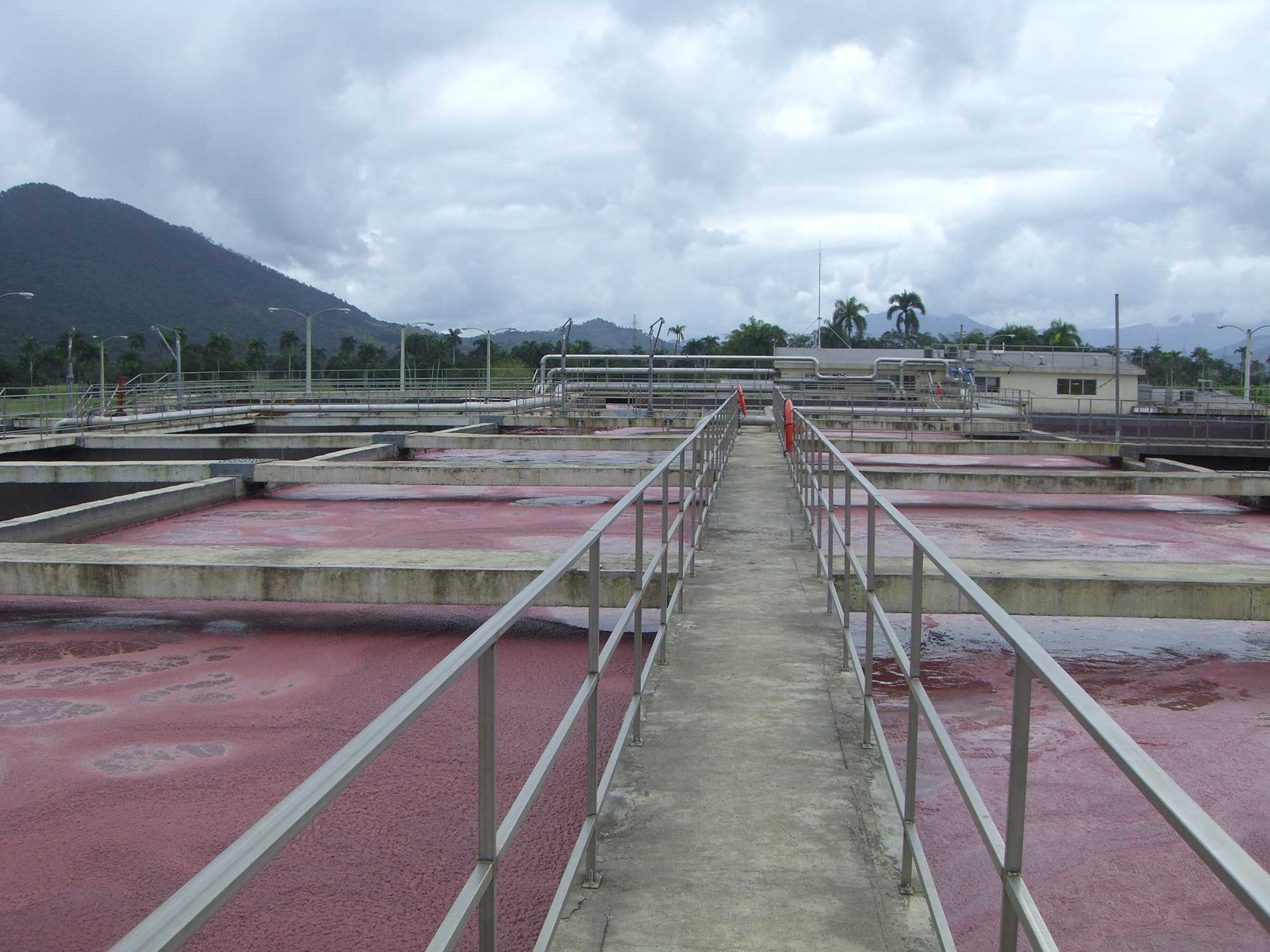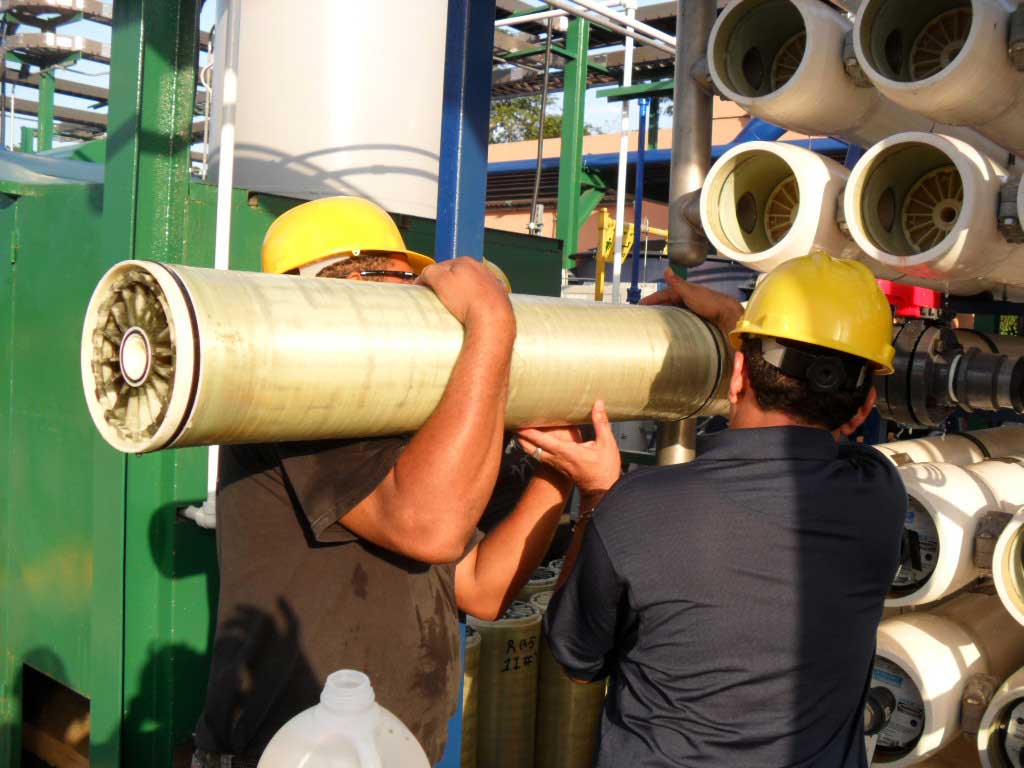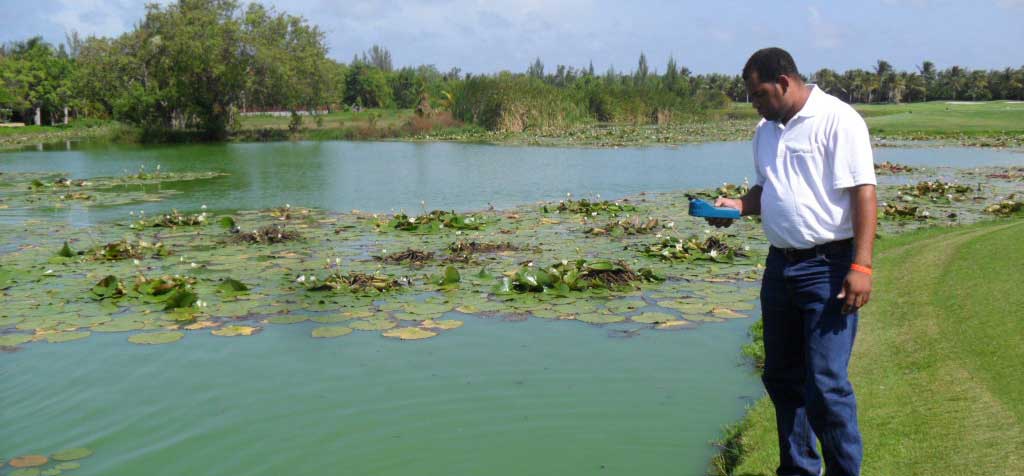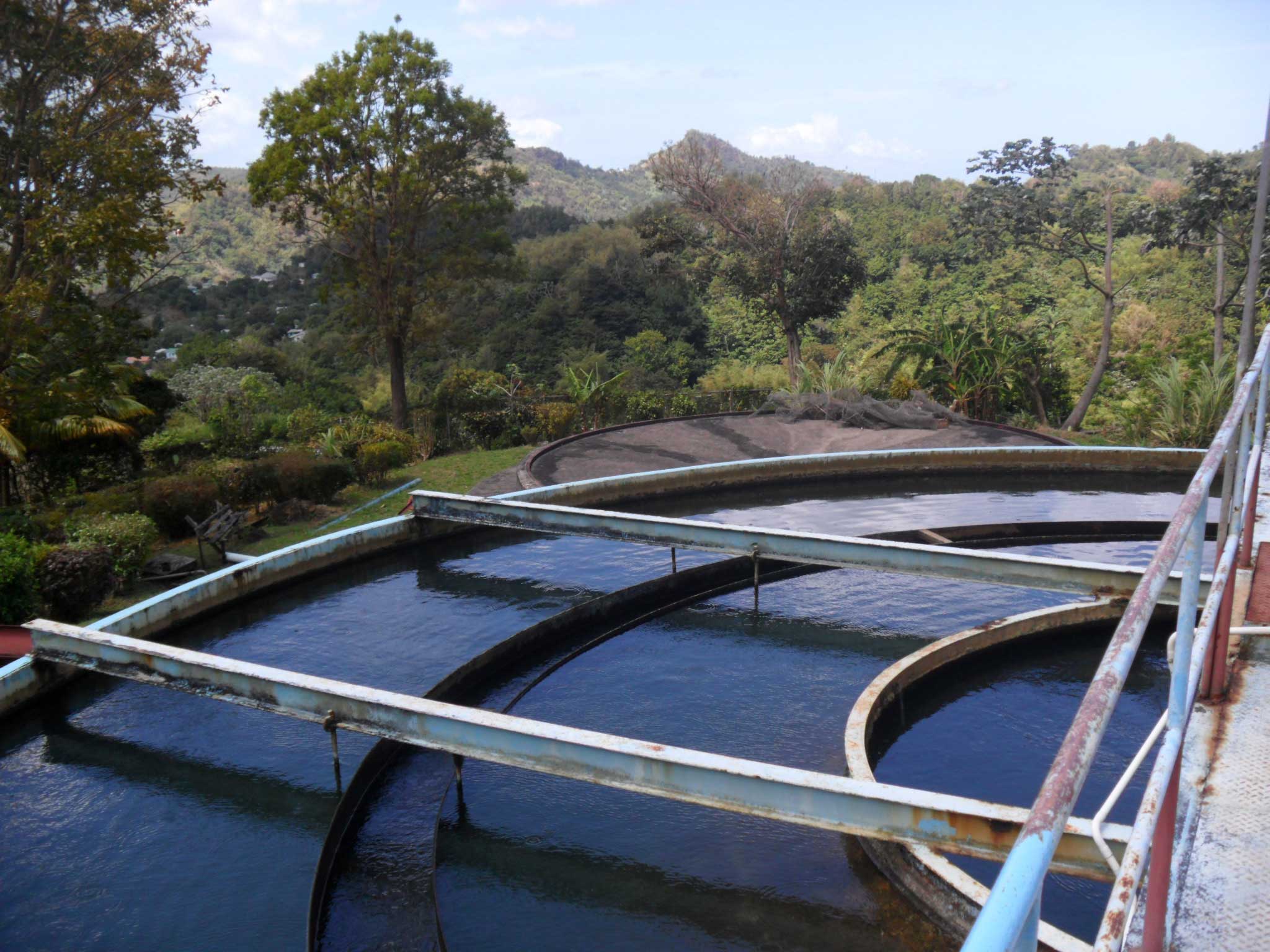Support Services
Water Analysis
A thorough and up-to-date water analysis is a critical aspect in selecting a targeted and properly-dosed antiscalant product for reverse osmosis (RO) or nano-filtration (NF) systems of any size and water quality. Selective ions must be tested in the feed water in order to predict the scale/fouling potential in the system. The specific ions tested are then entered into the Avista Advisor Projection software where recovery rates, antiscalant selection, dose rates and potential scales/foulants are determined.
Laboratory Membrane Cleaning Study
Our Avista laboratory membrane cleaning studiy, in conjunction with our Avista membrane autopsy, is a useful tool in validating the effectiveness of a membrane cleaning regime against a site-specific foulant.
Membrane cell test cleaning study before.
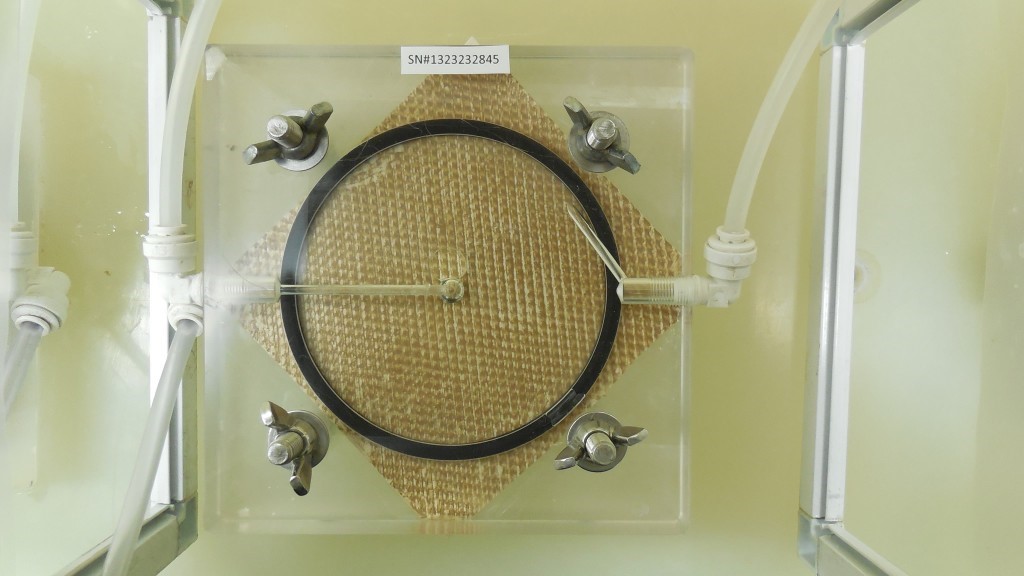
Membrane cell test cleaning study after.
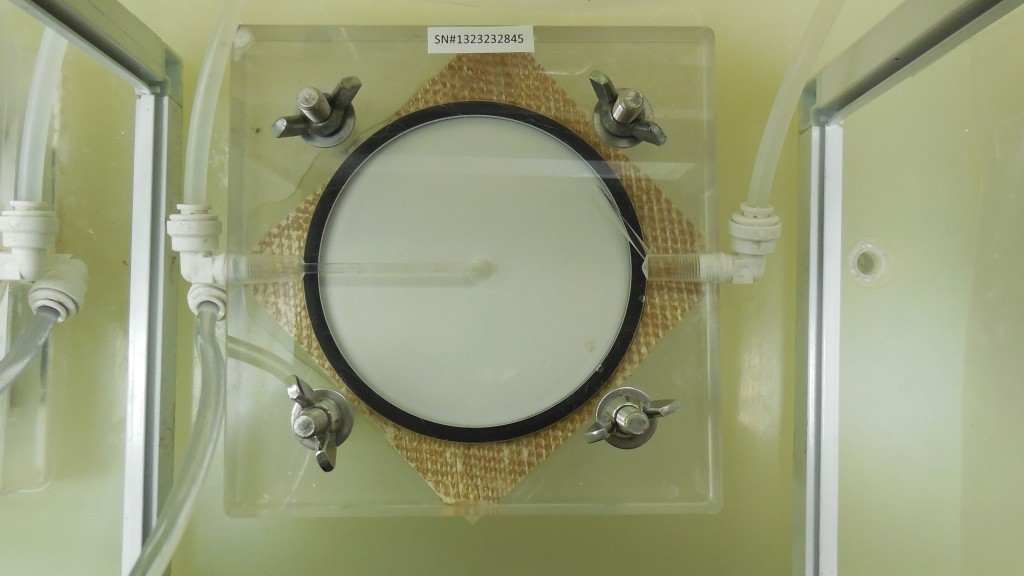
The Avista membrane autopsy identifies foulants and recommends solutions to minimize future fouling, and the Avista cleaning study identifies the best cleaner(s) and procedure to remove fouling on the Reverse Osmosis (RO), Nano (NF), Ultra (UF), or Micro (MF Filtration membranes already affected.
Samples of a dissected membrane or casing are placed on a clear cell tester and baseline flow and rejection performance are established under crossflow conditions. A cleaning solution is then recirculated through the tester at optimum temperature. Upon completion, post-clean data is recorded to determine the effectiveness of that particular chemistry. If necessary, this process continues until we’ve identified the cleaner that provides the best result.
Membrane and Module Autopsy
The physical dissection of a reverse osmosis (RO) element or microfiltration/ultrafiltration (MF/UF) module and the resulting analysis of its foulants can be one of the most definitive methods of troubleshooting a system.
Identifying the cause of performance loss is only part of this valuable service. Equally important are the recommendations provided in the Avista report which outlines the best course of action in correcting system problems including frequent cleanings, loss of productivity, reductions in permeate quality, system downtime or premature membrane or MF/UF replacement.
Why Conduct An Autopsy?
- To identify scaling or fouling problems
- To determine the proper cleaning regimen
- To improve system performance
Filtration Study
The MMF Filtration Study helps determine the most efficient and cost-effective dosage of RoQuest® coagulant for site-specific feedwaters. The MMF Laboratory Analysis uses particle counts, zeta potential, and turbidity to characterize a water sample for colloids and silt and determine its fouling potential. The analysis can be done on feed water or filtrate to gain a better understanding of the foulant parameters.
To assist you in identifying site-specific foulants, we offer Membrane Autopsies. Our Autopsies include Chromatic Elemental Imaging (CEI), an innovative technology first introduced by Avista that can identify the location and relative concentration of elements in a membrane fiber sample.
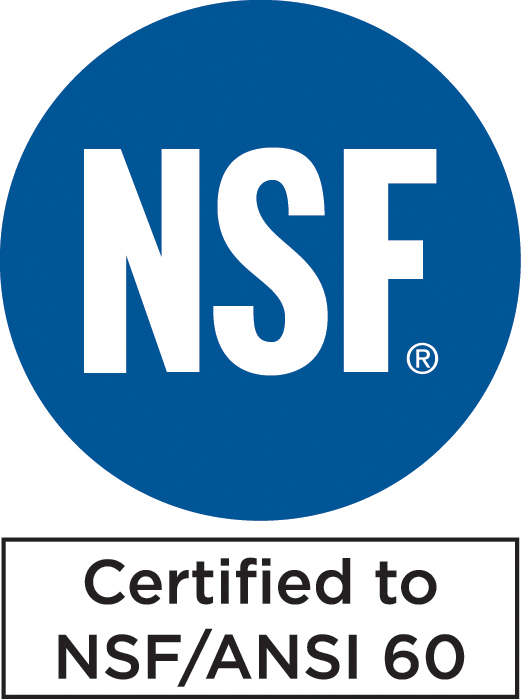
Multi-Media Filter Coagulants
Our Avista RoQuest® membrane compatible coagulants improve the efficiency of multimedia filtration (MMF) equipment by increasing particulate removal and providing a higher quality feedwater to downstream membrane systems. Adding a RoQuest liquid coagulant to feedwater causes particles to be more readily retained by MMF equipment, improving the filtrate quality fed to downstream membrane systems. Better quality filtrate can reduce cleaning frequencies and increase system run times. Studies prove that a nominal dosage of a RoQuest coagulant may allow MMF equipment to remove over 97% of particulates.
RoQuest® 3000
RoQuest® 3000 liquid coagulant contains a proprietary blend of organic polymers to significantly improve multimedia filter efficiency.
RoQuest® 4000
RoQuest® 4000 liquid coagulant is an organic polymer and ferric sulfate blend used to enhance the removal of a broad spectrum of silt, organics and colloids in multimedia filters.
RoQuest® 6000
RoQuest® 6000 is a liquid blend of organic coagulants and ferric sulfate used to reduce turbidity and remove humic and fulvic acids in multimedia filters.
RoQuest® FS
RoQuest® FS liquid coagulant contains ferric sulfate and is designed for use as a flocculant in direct filtration applications.

Membrane Biocides
Our Avista RoCide® are non-oxidizing, membrane compatible biocides to reduce biological fouling in membrane systems. RoCide biocides are broad spectrum formulations that combat contaminants such as bacteria, fungi and algae. They are compatible with all membranes and can be used with various Avista cleaners. Our biocides may be applied intermittently, via continuous injection or as a periodic addition to your clean-in-place (CIP) system.
RoCide® DB5
RoCide® DB5 is a fast-acting, non-oxidizing liquid biocide that degrades naturally and rapidly, making it a cost-effective method of eliminating contamination in compliance with strict discharge regulations.
RoCide® DB20
RoCide® DB20 is a concentrated, fast-acting, non-oxidizing liquid biocide that provides instant antimicrobial activity. This product degrades rapidly and naturally, making it a cost-effective method of eliminating contamination in compliance with strict discharge regulations.
RoCide® IS2
RoCide® IS2 liquid is a broad spectrum, non-oxidizing biocide intended for continuous injection and specifically formulated for RO feedwaters. It is also highly effective as a preservative and can be used alone or in conjunction with RoCide® DB20.
Technical Datasheet

Chlorine Removal
Our chlorine removal formulations remove free and combined chlorine from RO system feedwaters to protect membranes from oxidation damage. Membranes can last for days or years depending on the care they receive. Chlorine in feedwater can permanently damage membranes, requiring them to be replaced. AntiChlor is an extremely economical option for chlorine removal compared to other methods. It’s offered in two formulations, and both are certified for use in systems producing potable water.
AntiChlor® 30
AntiChlor® 30 is a liquid dechlorinating agent used as a mild, non-oxidizing biostat or injected into RO feedwaters to protect polyamide membranes from permanent damage caused by chlorine.
AntiChlor® 427
AntiChlor® 427 is a modified, liquid sodium bisulfite formulation used to remove free and combined chlorine from RO feedwaters. This unique chemical is odorless and stabilized to prevent off-gassing, making it ideal for indoor installations.
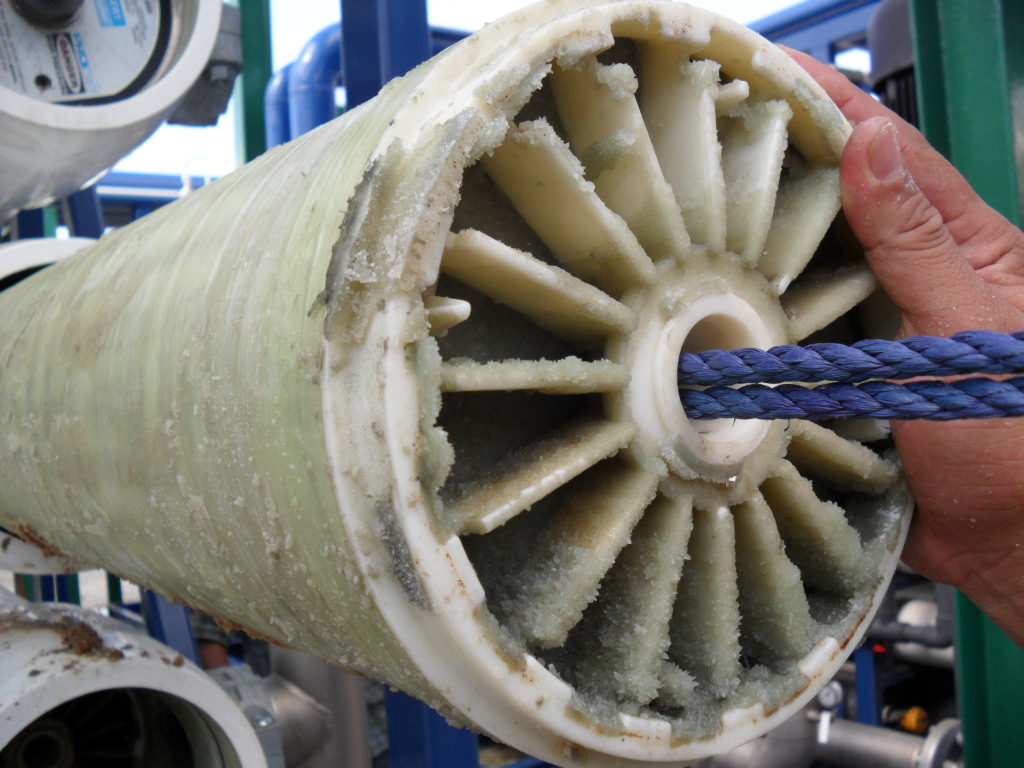
Membrane Cleaners
Our AvistaClean® and RoClean liquid and powder formulations are proprietary membrane cleaners that provide efficient and cost-effective removal of all types of membrane foulants. They’re powerful against organic and inorganic foulants and compatible with all membranes. Several cleaners are classified as Green Chemicals to help meet strict environmental discharge limits, and are the highest performing green cleaners in the industry. Most are NSF certified for use in drinking water potable systems.

POWDER MEMBRANE CLEANERS
AvistaClean® P611 Green
AvistaClean® P611 powder is free of phosphate and EDTA. It dissolves organic foulants such as humic acids, fatty acids, siloxane compounds, fungicides, pesticides and pharmaceutical compound and is highly buffered to resist pH changes during the cleaning.

RoClean P111
RoClean P111 powder is a multicomponent, high pH buffered cleaner formulated to remove biological fouling in the presence of hydrophobic and hydrophilic organics and particles, such as clay, from membranes.
RoClean P112
RoClean P112 powder is a multicomponent, high pH buffered cleaner specifically formulated to safely remove silica scale from membranes.
RoClean P303
RoClean P303 powder is a multicomponent, low pH buffered cleaner formulated to remove metal foulants and calcium carbonate from membranes.
RoClean P703 and P903
RoClean P703 and P903 powders are multicomponent, low pH buffered cleaners formulated to remove metal foulants such as iron, manganese and aluminum from membranes.
RoClean P911
RoClean P911 powder is a multicomponent, high pH buffered cleaner formulated to remove particularly high levels of organics, including humic and fulvic acids.
LIQUID MEMBRANE CLEANERS
AvistaClean® L011
AvistaClean® L011 liquid is a multicomponent, high pH buffered cleaner formulated to remove oils and grease from membranes.
RoClean L211
RoClean L211 liquid is a multicomponent, high pH buffered, low-foaming cleaner formulated to remove colloidal silica, clays, organic color and bacterial slime from membranes.
RoClean L212 Green
RoClean L212 liquid is a multicomponent, high pH buffered cleaner formulated to remove clay and metal oxides from membranes.

RoClean L403
RoClean L403 liquid is a multicomponent, low pH cleaner formulated to remove metal foulants and calcium carbonate scale from membranes.
RoClean L811
RoClean L811 liquid is a multicomponent, high pH buffered cleaner formulated to remove sulfate scales including barium, strontium and calcium sulfate from membranes.
UF / MICRO FILTRATION MEMBRANE CLEANERS
Our Avista micro-filtration (MF) / ultra-filtration (UF) specialty formulations may be applied in place of generic cleaners or as a periodic recovery cleaner between cleanings with generics. The AvistaClean MF line is formulated to remove common foulants and offer superior results compared to generics. To assist you in identifying site-specific foulants, we offer the MF / UF Cleaning Study and the MF / UF Membrane Autopsy, which includes Chromatic Elemental Imaging, a new technology to identify the location and relative concentration of elements in a membrane fiber sample.
AvistaClean® MF 1000
AvistaClean® MF 1000 powder is a proprietary, one-step cleaner used to remove foulants from MF and UF membrane surfaces and pores.
AvistaClean® MF 1000A
AvistaClean® MF 1000A powder is a synergistic cleaner blend formulated to remove organic and particulate foulants from chlorine tolerant MF and UF membrane surfaces and pores.
AvistaClean® MF 3000
AvistaClean® MF 3000 powder is a low pH, proprietary cleaner that removes calcium carbonate and metal foulants from MF and UF membrane surfaces and pores.


